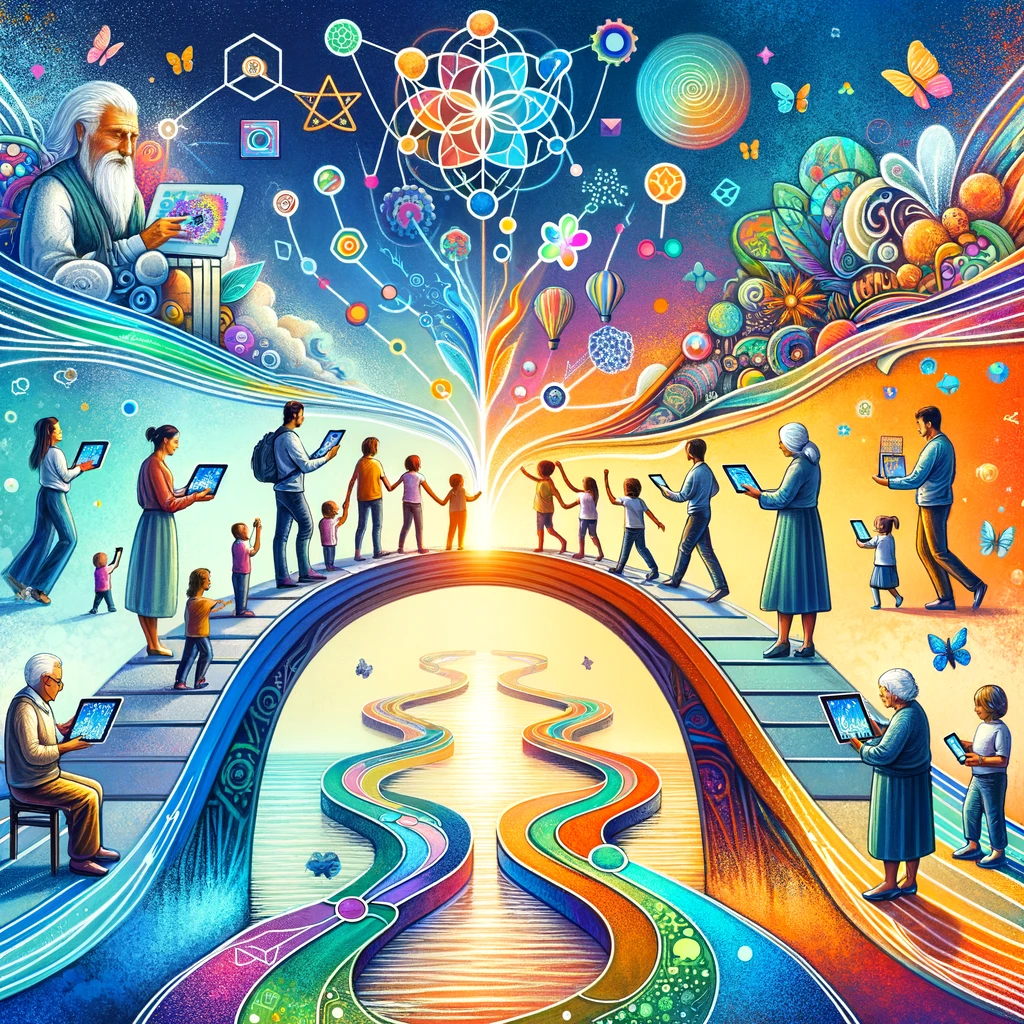In the era of rapid technological advancement, artificial intelligence (AI) has emerged as a revolutionary force, reshaping industries, transforming daily lives, and redefining creativity. Among its myriad applications, AI art creation stands out as a particularly fascinating domain, where the blend of technology and creativity opens new horizons for artistic expression. This article explores the significance of introducing AI art creation to different age groups, highlighting the benefits, challenges, and strategies to bridge generations through this innovative medium.
Understanding AI Art Creation
AI art creation involves using algorithms and machine learning models to generate art that can range from paintings and drawings to music and poetry. These AI systems can analyze vast datasets of existing artworks to learn various styles and then create new, original pieces that reflect learned patterns, techniques, and aesthetics. The result is a symbiosis of human creativity and machine efficiency, offering novel pathways for artistic exploration.
The Multigenerational Appeal of AI Art
AI art creation holds unique appeal across different age groups, each finding distinct value and perspective in interacting with this technology.
Children and Teenagers: Younger generations, growing up in a digital world, are native to technology. Introducing them to AI art creation can stimulate their innate creativity, offering a hands-on experience with AI that blends play with learning. It encourages critical thinking, problem-solving, and technological literacy, preparing them for a future where AI plays a central role.
Adults: For adults, both as creators and appreciators, AI art offers a new medium for expression and exploration. It can serve as a tool for professional development in creative industries or a hobby that provides a creative outlet and mental relaxation. Adults can leverage AI art to explore new styles, enhance their work with AI-generated elements, or even collaborate with AI for unique creations.
Seniors: Seniors might approach AI art with curiosity and possibly apprehension, yet it presents an opportunity for lifelong learning and engagement with contemporary technology. AI art creation can be a source of intellectual stimulation, a way to connect with younger generations, and a means to leave a legacy through digital creation.
Bridging Generations Through AI Art
The introduction of AI art creation to different age groups can act as a bridge between generations, fostering mutual understanding, collaboration, and shared learning experiences. However, achieving this requires addressing several challenges and adopting effective strategies.
Challenges
- Technological Literacy: Varied levels of comfort and familiarity with digital tools can be a barrier to entry for some, particularly seniors.
- Perception of AI: Misconceptions and fears about AI’s impact on creativity and jobs might hinder acceptance.
- Engagement: Finding ways to make AI art creation appealing and accessible across diverse age groups requires tailored approaches.
Strategies for Effective Introduction
- Education and Workshops: Conducting educational sessions and workshops that demystify AI and its applications in art can help allay fears and spark interest. These should be age-appropriate, focusing on hands-on experiences that highlight the creative potential of AI.
- Collaborative Projects: Encouraging collaborative projects that involve participants from different generations can facilitate mutual learning and appreciation. For instance, a project could involve children designing concepts that adults or seniors bring to life using AI art tools, fostering dialogue and collaboration.
- Accessibility: Ensuring that AI art tools are accessible and user-friendly is crucial. This might involve developing interfaces that are intuitive for all age groups or providing templates and guides that help beginners start creating with AI.
- Showcasing and Celebrating Diversity: Organizing exhibitions or online galleries that showcase AI art created by different generations can celebrate the diversity of perspectives and creativity. This not only promotes the work but also encourages participants by showing the value and beauty in their creations.
Conclusion
Introducing AI art creation to different age groups offers a unique opportunity to bridge generations, leveraging the universal language of creativity to foster understanding, collaboration, and shared joy in discovery. By navigating the challenges and adopting inclusive strategies, we can unlock the potential of AI art as a tool for lifelong learning, expression, and connection. As we move forward, it will be exciting to see how AI continues to transform the art world, bringing together people of all ages in the pursuit of beauty, innovation, and shared human experience.
